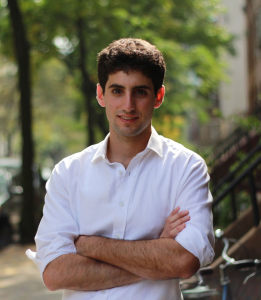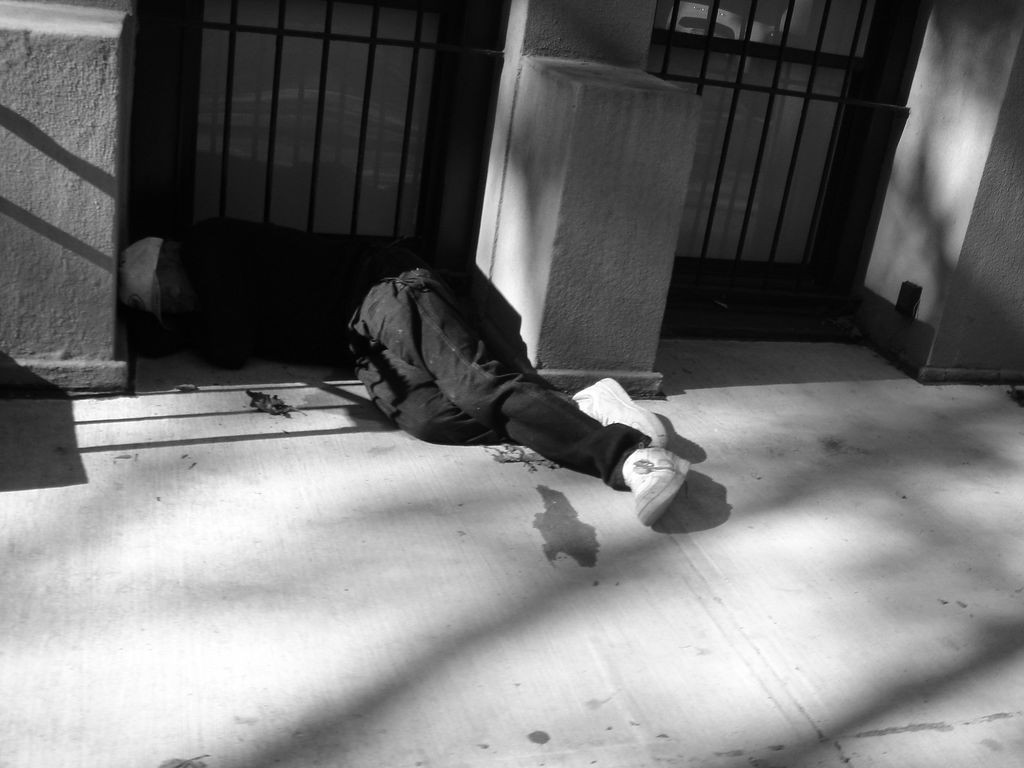Due to inclement weather back on January 26 (known as the blizzard that wasn’t, or Mayor de Blasio’s voice-acting debut) back on January 26, NYC’s Department of Homeless Services’ annual Street Survey was postponed to this past Monday, February 9. Just the ghost of frost on the floor, but this time, no snow. The city’s initiative, called HOPE (Homeless Outreach Population Estimate), has been conducted since 2003 and since then surveys like it have become a federal requirement for some portions of HUD funding. Once a year, DHS relies on thousands of volunteers to fan out across the city, spending a night counting the homeless.
The main purpose of the evening is the count itself, and secondarily the rendering of necessary service. This service—providing transportation to intake shelters, for example—comes to the forefront on nights when the temperature dips below 32 degrees and DHS’ outreach intensifies. These situations are called Code Blue, and Code Blue was in effect last Monday night. Expanded social programs like this one are part of Mayor Bill de Blasio’s 2016 budget, unveiled this week, including increased funding for homeless outreach and services from $35.5 to $45 million. Homelessness is one of the starkest examples of de Blasio’s “two cities.” If the mayor has his way, homelessness would be dramatically reduced by the time he leaves office. Though HOPE isn’t a perfect count, it’s part of the process.
At PS 261 in Boerum Hill, Brooklyn, a DHS staffer explains the plan for the evening. Volunteers, organized in groups of three to six, are given maps for their assigned areas and are urged to stop everyone beyond those who are “clearly working” (construction workers, transit personnel) to ask about each individual’s housing situation. To keep the process honest, there are decoys dressed as homeless people fanned out on some routes in order to determine the statistical integrity of the count. Many locations, the staffer reiterated, would likely have no homeless persons, but this too was important for the survey’s methodology as it helps demonstrate where services, either rendered or not, were most in need. As Eric Adams welcomed the crowd, bundled up in his Brooklyn Borough President jacket against the cold, the volunteers drank coffee and munched on mini pretzels, shaped like hearts for Valentine’s Day this week. A volunteer asked what the procedure was if the searchers found children among the homeless. “In nine years I’ve never seen that at this location,” the staffer said. “But call me immediately,” he added, if so.
The street survey captures mainly individuals who are homeless, as opposed to families. The following graphic takes data from the NYC Department of Homeless Services, showing the monthly placements made for homeless individuals into permanent or temporary housing by outreach teams.
By 12:15 the cafeteria emptied. Lights were just beginning to shut off for the night on nearby residential streets. Besides the cold, my group’s only problems were covering the streets in the correct order as our map approached the tangle of Barclays Center and Flatbush and Atlantic Avenues. Figures stepped out of bars or houses for a smoke but mostly re-entered before we reached them—seeing our clipboards—like good New Yorkers—they looked the other way.
Underground, however, while sweeping the D, N, and R platforms, Manhattan-bound, we came across a young man wrapped in scarves and sweatshirts, his head tucked into a heavy jacket. He was leaning against an I-beam perilously close to the yellow danger strip at the edge of the tracks—sitting on a piece of cardboard, a plastic cup with dollar bills rolled inside. We kneeled down.
Excuse me sir, we’re conducting a survey to check on people’s housing situation. Do you have housing tonight?
The man looked at us blankly, and stirred slightly within his jackets.
Excuse me sir, we said? Silently he reached inside his jacket and pulled out a crumpled pink pamphlet, handed it over.
What’s this, we asked?
He gestured at the cover. It was the decoy’s mark. There was a sticker inside which we attached to the survey questionnaire.
The decoy got up, dusted himself off, picked up his cardboard and his cup. In retrospect, the symbols had been too perfect; the cardboard too carefully folded—and the position against the I-beam, bolts and all, far too precarious to be comfortable for long.
Coming up the stairs, an older man who we had noticed two or three trains ago was still where he had been. He was fidgety, somewhat jumpy. His shoes were old and scuffed, and he had what looked like a warm jacket, but he wasn’t particularly wrapped up. Slightly off our game after the decoy, we approached slowly.
Excuse me sir, can we ask a few questions….
As if accustomed to the charade, the man reached for the clipboard, asked for a pen, wanting to fill out what was asked of him. We explained that we just needed to ask a few questions, that we in fact could fill the paperwork out. The most important question, of course, was whether he was in fact homeless. But he was having none of it, and decided to fill in the survey himself, somewhat ambiguously. In the space for location encountered he filled in the Scantron bubble for Manhattan, because he said it’s what he liked. He noted carefully that he was 51 years old. In the end he signed his name with a flourish, though there wasn’t a space for it. We left the station to survey the rest of our empty streets, and he stayed by the trains.
·
 Mark Chiusano is the author of the book of stories, Marine Park.
Mark Chiusano is the author of the book of stories, Marine Park.

